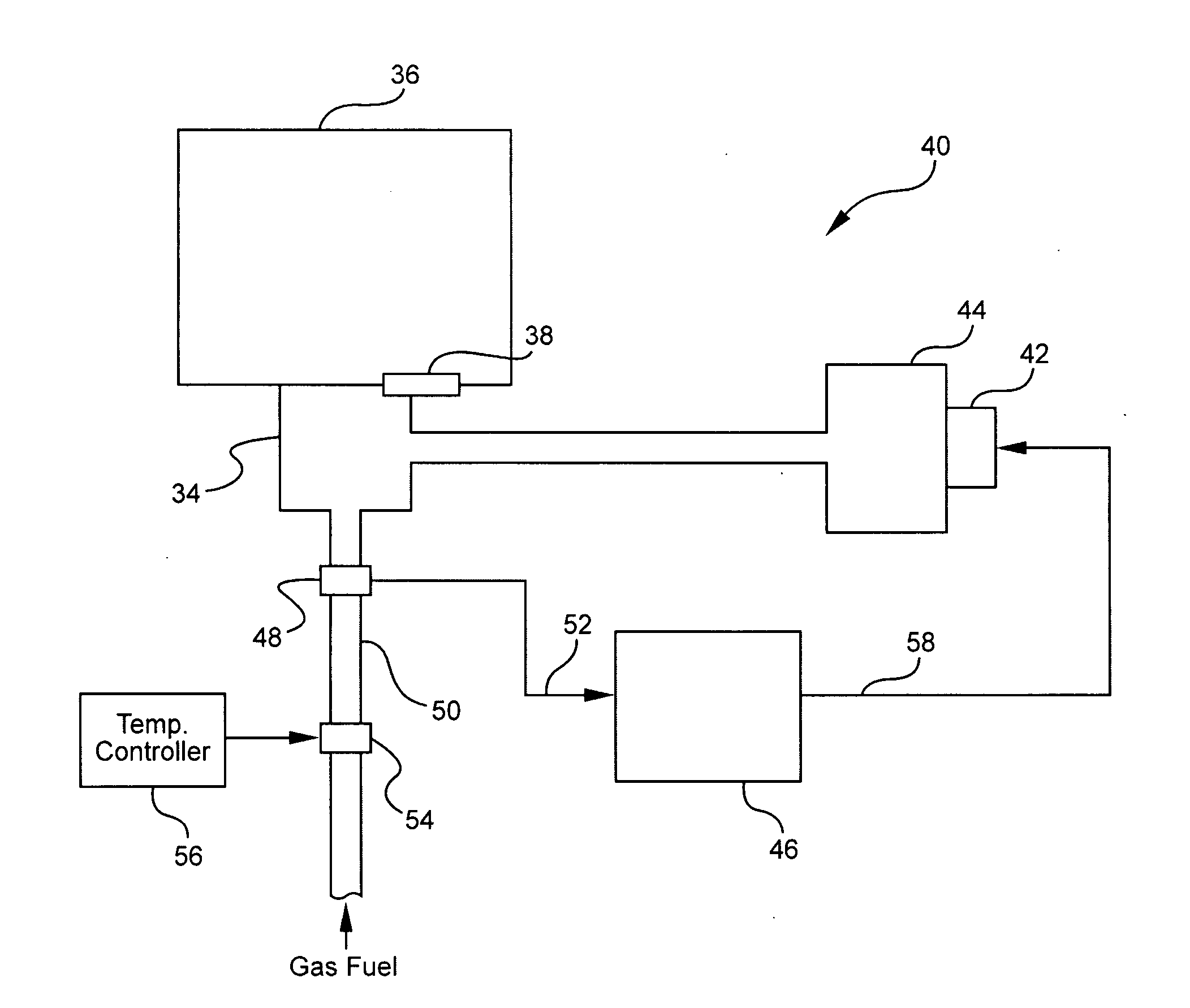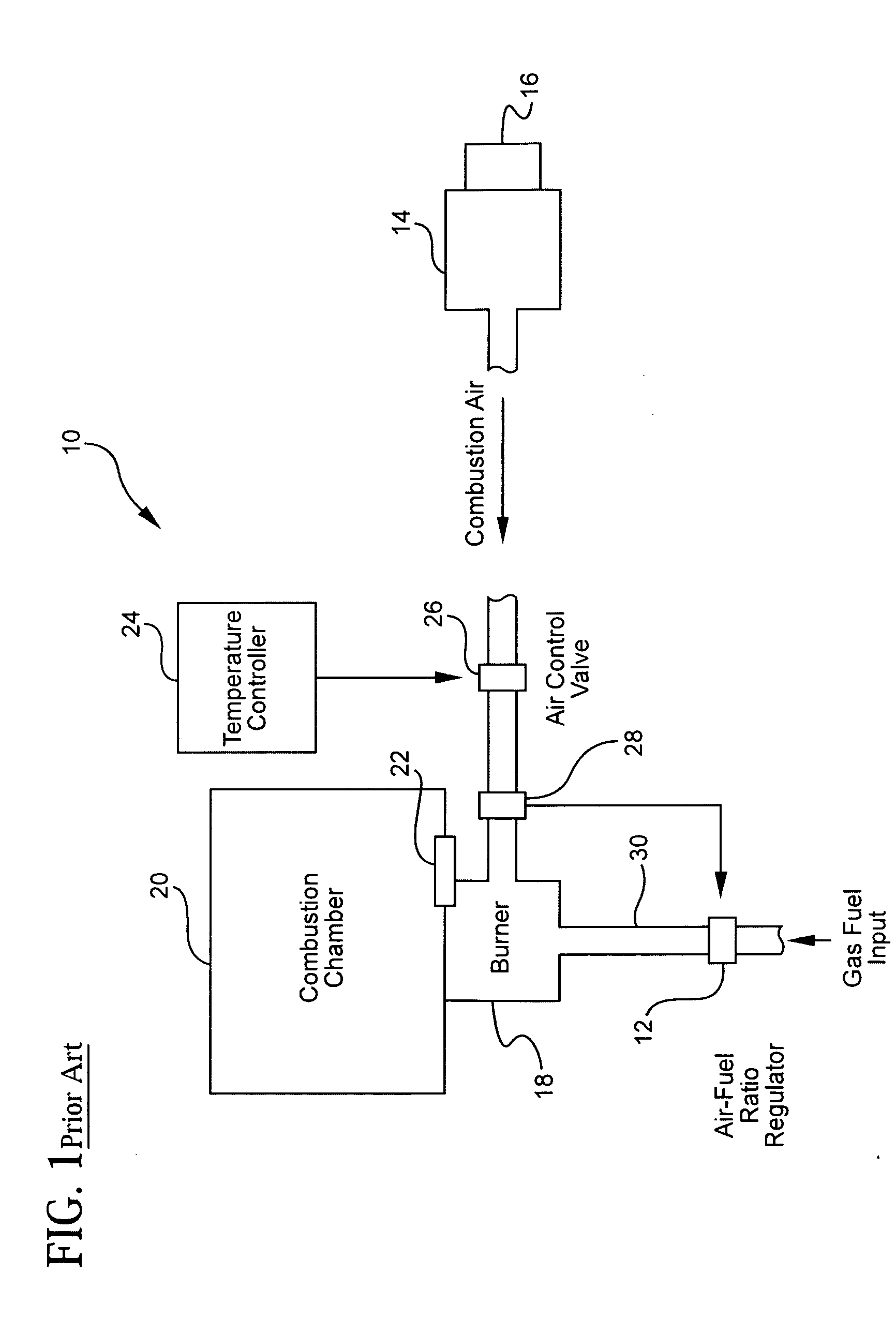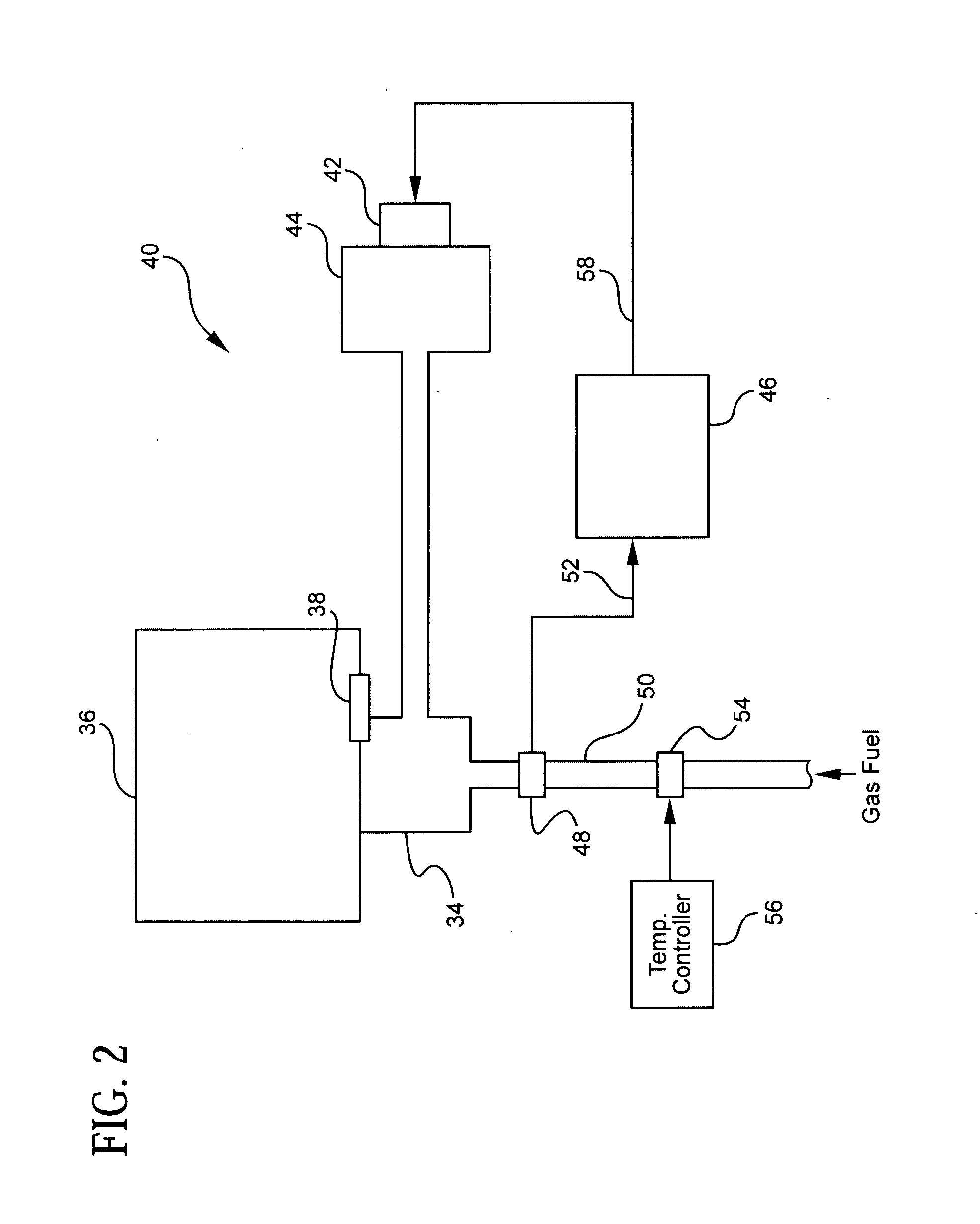System and method for combustion-air modulation of a gas-fired heating system
- Summary
- Abstract
- Description
- Claims
- Application Information
AI Technical Summary
Benefits of technology
Problems solved by technology
Method used
Image
Examples
Embodiment Construction
[0025] The present invention provides a method and system for modulating the combustion-air supply in a gas-fired heating system in order to provide improved thermal efficiency. Such heating systems may include, for example, furnace or make-up air systems, or space heaters.
[0026] Conventional modulating gas-fired burners exhibit improved thermal efficiency, combustion quality, and ignition reliability, by modulating the fuel-gas flow in response to the flow rate of combustion air. However, the ability to accurately control the fuel-gas flow is negatively affected by the low negative pressures of the combustion air flow measurements. As a result, it is often difficult to maintain good thermal efficiency over a broad modulation range in conventional modulating gas fired burners.
[0027] Referring to FIG. 1, a typical prior art variable fuel-input rate system 10 includes a valve or regulator 12 for varying the fuel-input rate, a combustion air blower 14 or other means for providing com...
PUM
 Login to View More
Login to View More Abstract
Description
Claims
Application Information
 Login to View More
Login to View More - R&D
- Intellectual Property
- Life Sciences
- Materials
- Tech Scout
- Unparalleled Data Quality
- Higher Quality Content
- 60% Fewer Hallucinations
Browse by: Latest US Patents, China's latest patents, Technical Efficacy Thesaurus, Application Domain, Technology Topic, Popular Technical Reports.
© 2025 PatSnap. All rights reserved.Legal|Privacy policy|Modern Slavery Act Transparency Statement|Sitemap|About US| Contact US: help@patsnap.com



